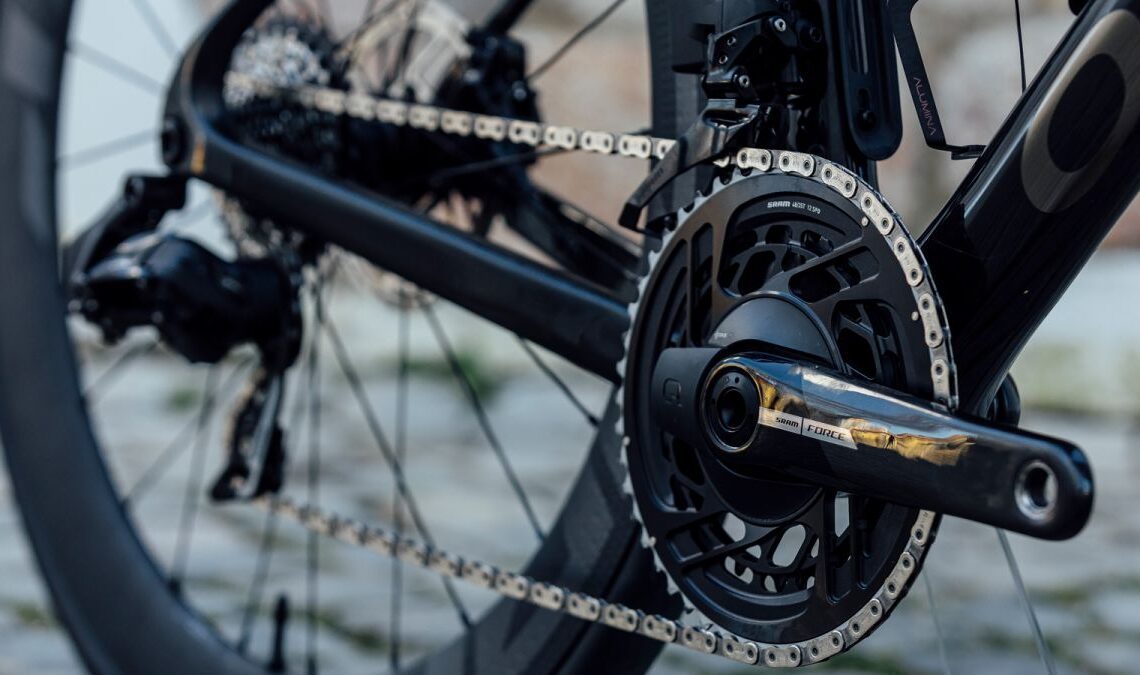Sram has today announced an update to Force; its second-tier wireless road groupset which sits as the slightly more affordable sibling to the flagship Red.
With it also comes a minor name change; the latest edition of Force is to be known only as Force AXS, rather than Force eTap AXS as before. Sram says the ‘eTap’ moniker will be phased out from its entire range, saying it’s unnecessary now that it’s now almost ubiquitous in the lineup.
The slightness of the name change is actually a bit of a clue as to how much of the groupset itself has changed. To coin a favourite phrase, it’s certainly “evolution not revolution,” and it’s evident that Sram has looked elsewhere in its stable for inspiration.
Overall, it has been given a more subtle – and I think premium – finish, with smaller logos and light-catching holographic details throughout. This is by no means unintentional, with Sram specifically marketing the new version of Force as ‘super bike ready’.
It’s more than just an aesthetic update though. Redesigned shifters, new gearing options, a consolidation of rear derailleurs, and a new power meter construction are the main talking points, so let’s dive in and see what’s new.
Shifters to rival Rival
The new hood shape is the biggest tangible difference between Forces old and new. It has borrowed the design here from the lower-tier Rival groupset, whose lower-profile hoods and reshaped shift paddles were widely lauded as an improvement over the bulkier Force and Red. The diameter of the hoods is smaller, which Sram says is better for smaller hands, and, interestingly, Sram also says it offers more room between the hood and lever, making it more comfortable for those with bigger hands too. A win-win in my book.
With the step up from Rival to Force, there’s also a step up in materials used. Specifically, this means the brake lever is carbon, not alloy, which brings the weight down a smidge. In their downsizing compared to the outgoing Force, the new shifters lose the pad spacing adjustment – Sram says not many people actually used this feature – and they lose the wired blip ports too. Given Sram’s Blips are wireless now, this makes sense, but it will deter owners of the wired Blips looking to upgrade. All other technologies remain, including the lever blade reach adjustment.
Interestingly, our Opening Weekend tech gallery highlighted a new Rival-esque Sram lever, so it’s a safe bet to assume it’s these.
Click Here to Read the Full Original Article at CyclingNews RSS Feed…

